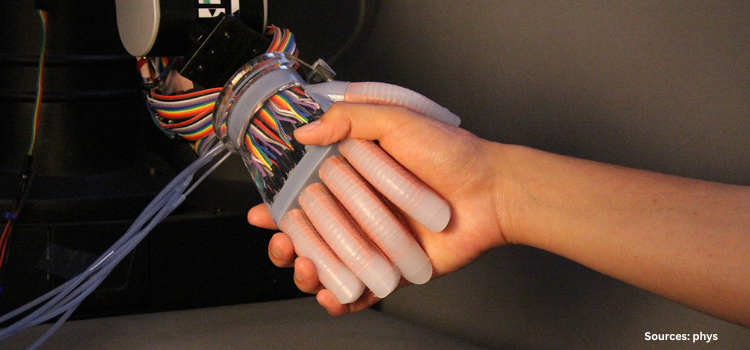Japan Eye Tracking Market by Type (Head Mounted Eye Tracker and Remote Eye Tracker), by Component (Hardware and Software), by Application (Assistive Communication, Academic Research, Consumer Behavior Research, Usability Testing and Other Applications), and by End-User Industry (Retail, Automotive, Healthcare, Government and Others)- Opportunity Analysis and Industry Forecast, 2024– 2030
Industry: Semiconductor & Electronics | Publish Date: 03-Jan-2025 | No of Pages: 143 | No. of Tables: 108 | No. of Figures: 53 | Format: PDF | Report Code : SE2454
Japan Eye Tracking Market Overview
The Japan Eye Tracking Market size was valued at USD 94.0 million in 2023, and is predicted to reach USD 426.3 million by 2030, at a CAGR of 22.9% from 2024 to 2030. The eye tracking market is a comprehensive ecosystem of products, services, and technologies designed to measure and analyze eye movements, gaze direction, and fixation points. This market includes specialized hardware such as cameras, sensors, and light sources, as well as software solutions for data processing and analysis.
Eye tracking also known as eye monitoring systems are applied across various industries such as psychology, market research, user experience testing, and human-computer interaction to provide insights into consumer behavior, visual perception, and interface usability. In the contemporary landscape of user experience and human-computer interaction, eye monitoring systems emerges as an indispensable tool, offering invaluable insights into user engagement and interface usability. By meticulously scrutinizing how users navigate digital interfaces and websites, designers can discern pain points, optimize layouts, and refine interactions to foster seamless user experiences.
Rising adoption of Eye Tracking Technology in Healthcare Sector Drives the Japan Eye Tracking Market Growth
Japanese healthcare institutions and businesses are increasingly using eye-tracking technology for various applications, including studying eye movements for diagnostics and understanding cognitive processes. In April 2022, Otsuka Pharmaceutical and Ai-Brain Science entered into an exclusive sales collaboration in Japan to promote AiBS-01, a cognitive function testing application that relies on eye movement.
This innovative product is poised to become Japan's first dementia diagnosis application pending regulatory approval. AiBS-01, developed by Ai-Brain Science, can be easily installed on tablets like iPads, marking a significant advancement in using eye-tracking technology to assess cognitive health.
Eye-Tracking Technology Integration in Japanese Automotive Industry Drives the Market
Japanese automotive manufacturers are increasingly incorporating eye-tracking technology into vehicles, focusing primarily on driver monitoring systems to enhance road safety and prevent accidents. These systems track drivers' eye movements and alertness, playing a crucial role in ensuring driver safety.
For instance, in December 2022, Smart Eye, a developer of Driver Monitoring System (DMS) software, announced 12 design wins with a new Japanese client. These driver monitoring systems enhances automotive safety by tracking driver attentiveness and ensuring their well-being.
Presence of Alternative Technologies Hinders the Japan Eye Tracking Market Expansion
The Japan eye tracking market expansion is significantly restrained by the proliferation of alternative technologies such as gesture recognition, unimodal methods, and multimodal activity recognition. This technology excels at recognizing emotions conveyed through facial expressions, hand gestures, and body language.
In sectors such as consumer electronics and gaming, where predicting user behavior is crucial, these alternative technologies offer valuable insights that surpass the capabilities of traditional eye tracking market. As a result, the availability and adoption of these alternatives limit the market's growth potential by providing competitive solutions that meet diverse user needs and preferences.
Integration of AR and VR in Eye Tracking Technology Create Future Market Prospects
The swift integration of eye monitoring systems across various sectors, including augmented reality (AR), virtual reality (VR), lie-detection systems, and cognitive testing, is poised to unlock significant opportunities within the Japan eye tracking market growth.
This technology plays a crucial role in enhancing image clarity and reducing eye strain in AR and VR applications, making it a dynamic field driven by startups and investments from tech giants such as Apple, Google, Facebook, and Samsung.
For instance, in March 2022, Mojo Vision announced a new advanced prototype of its AR smart contact lens Mojo Lens. The prototype includes various new hardware features and advanced technologies such as advanced display, eye tracking technology, and a power system embedded into the lens. It allows users to access timely information quickly and discreetly without forcing them to look down at a screen.
Competitive Landscape
The key market players operating in the Japan eye tracking industry include Tobii AB, Smart Eye AB, Lattice Semiconductor Corp, Ogilvy, Seeing Machines Limited, AVSimulation, Lumen, Eyetech Digital Systems, Inc., EyeTracking, Gazepoint, Eyegaze, Eyeware Tech, SR Research Ltd., Pupil Labs, and Irisbond Crowdbonding, S.L. and others.
Japan Eye Tracking Market Key Segments
By Type
-
Head Mounted Eye Tracker
-
Remote Eye Tracker
By Component
-
Hardware
-
Software
By Application
-
Assistive Communication
-
Academic Research
-
Consumer Behavior Research
-
Usability Testing
-
Other Applications
By End-User Industry
-
Retail
-
Automotive
-
Healthcare
-
Government
-
Others
REPORT SCOPE AND SEGMENTATION:
|
Parameters |
Details |
|
Market Size in 2023 |
USD 94.0 Million |
|
Revenue Forecast in 2030 |
USD 426.3 Million |
|
Growth Rate |
CAGR of 22.9%% from 2024 to 2030 |
|
Analysis Period |
2023–2030 |
|
Base Year Considered |
2023 |
|
Forecast Period |
2024–2030 |
|
Market Size Estimation |
Million (USD) |
|
Growth Factors |
|
|
Companies Profiled |
15 |
|
Market Share |
Available for 10 companies |
|
Customization Scope |
|
|
Pricing and Purchase Options |
Avail customized purchase options to meet your exact research needs. |
|
Customization Scope |
Free customization (equivalent up to 80 working hours of analysts) after purchase. Addition or alteration to country, regional, and segment scope. |
|
Pricing and Purchase Options |
Avail customized purchase options to meet your exact research needs. |
KEY PLAYERS
-
Tobii AB
-
Smart Eye AB
-
Lattice Semiconductor Corp
-
Ogilvy
-
Seeing Machines Limited
-
AVSimulation
-
Lumen
-
Eyetech Digital Systems, Inc.
-
EyeTracking
-
Gazepoint
-
Eyegaze
-
Eyeware Tech
-
SR Research Ltd.
-
Pupil Labs
-
Irisbond Crowdbonding, S.L.














 Speak to Our Analyst
Speak to Our Analyst





















